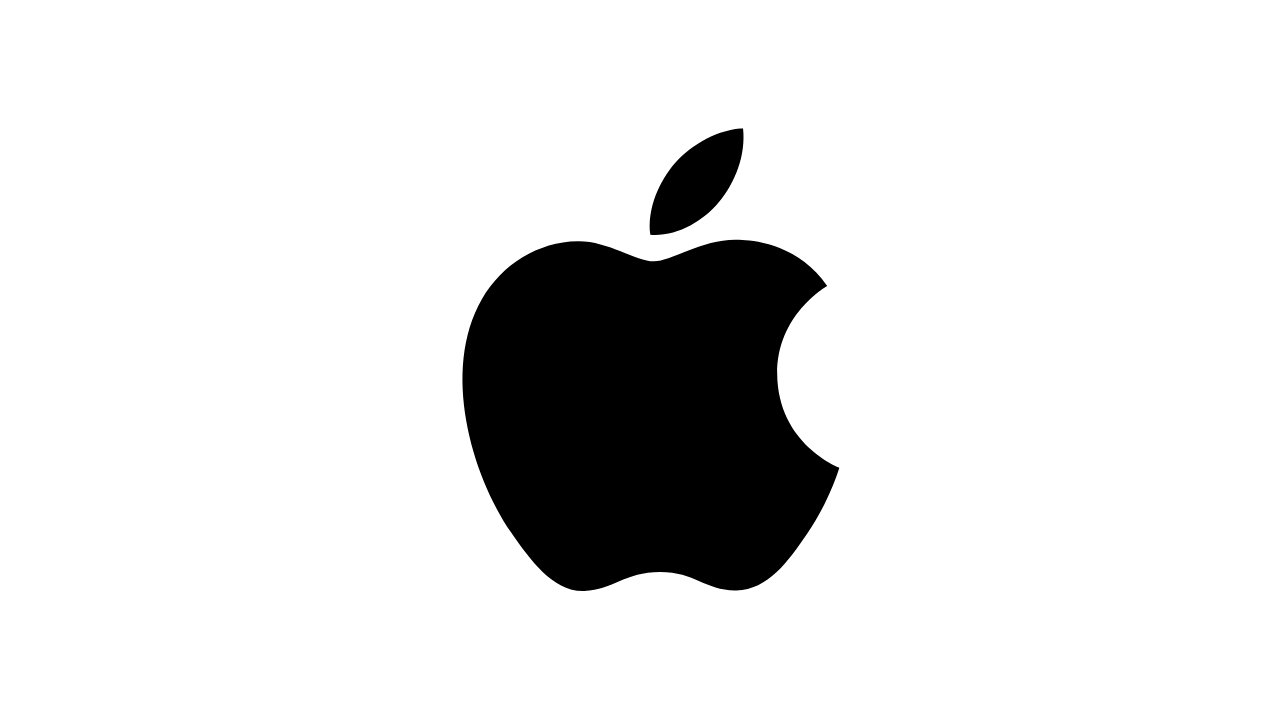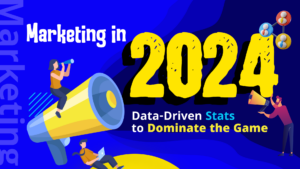It’s no secret that global giants leverage the power of both branding and marketing to craft winning campaigns. However, the importance of understanding this distinction goes far beyond established corporations. Whether you’re a budding startup or a seasoned business, grasping the difference between branding and marketing is key to unlocking efficient growth.
Both aspects play a crucial role in cultivating customer relationships and propelling sales. However, they operate through distinct processes and strategies. By demystifying these differences, you’ll equip yourself to achieve your business goals with laser focus.
What is Branding?
Think of your brand as your business’s unique personality – the essence that resonates with your target audience. It’s the story you tell, the values you represent, and the emotions you evoke. 89% of consumers prioritize brand loyalty when making purchasing decisions.

Let’s face it, some brands are just iconic. Take Apple, for instance. A whopping 87% of global consumers recognize the Apple logo – that’s brand recognition at its finest! In 2023, Apple’s brand value was approximately $880.5 billion, despite a seven percent drop from the previous year. This resilience is a testament to their strong brand loyalty, with a customer retention rate of 90%.
42Works specializes in crafting visually stunning and conceptually powerful logo designs that embody your brand and connect with your audience.
Here’s how to define your brand identity:
- Core Values: What principles guide your business decisions?
- Mission Statement: Why do you exist, and what problem do you solve?
- Target Audience: Who are you trying to reach?
- Unique Selling Proposition (USP): What makes you stand out?
- Brand Voice & Personality: How do you want to communicate with your audience (e.g., playful, professional)?
- Brand Promise: What experience do you guarantee your customers?
Remember, a well-defined brand identity is the foundation for successful marketing efforts. However, crafting a cohesive brand message and ensuring consistency across all touchpoints can be a challenge. 42Works can help!
Our team of branding experts can guide you through every step of the branding process, from crafting a compelling brand story to developing a cohesive visual identity.
What is Marketing?
Marketing encompasses the tools and strategies you use to spread your brand message and connect with your target audience. From social media campaigns to targeted advertising, marketing strategies are dynamic and measurable, allowing you to track their effectiveness and adapt as needed.

- Content Marketing: Valuable and informative content (e.g., blog posts, and infographics) attracts and educates potential customers. It generates over 3x as many leads compared to traditional methods.
- Social Media Marketing: Connecting with your audience on social media platforms fosters brand awareness and community building.
- Search Engine Optimization (SEO): Optimizing your website and content for search engines increases organic visibility.
- Pay-per-click (PPC) Marketing: Targeted ads drive traffic to your website or landing pages.
- Email Marketing: Fostering relationships with nurtured leads and existing customers through email campaigns. boasts an average ROI of 4200%, making it one of the most effective channels.
- Traditional Marketing: Offline methods like TV commercials, billboards, and print ads can still be impactful.
With such a diverse range of marketing tools at your disposal, you can tailor your approach to reach your target audience and achieve your business goals. Ready to explore the possibilities? From content marketing, and social media marketing to email marketing, let’s discuss which marketing channels would be the best fit for your brand!
Key differences between branding and marketing:
While branding shapes your identity and tells your story, marketing amplifies it. Let’s explore the key differences:
| Aspect | Branding | Marketing |
| Focus | Creating a unique identity | Promoting that identity and offerings |
| Goal | Build a positive image & reputation | Drive sales & generate leads |
| Timeline | Long-term play (building a lasting brand) | Can be short-term (campaigns for immediate results) |
| Connection | Emotional connection with customers | Provides factual information about product/service |
| Consistency | Consistent message across all touchpoints | Messages may differ based on channels/audiences |
| Scope | Encompasses the entire customer journey | Focuses on specific tactics (advertising, PR, promotions) |
| Relationship | Builds strong reputations & relationships | Reaches & engages potential customers |
| Differentiation | Emphasizes unique identity that sets you apart | Showcases features & benefits of product/service |
| Results | Long-term goals (building a lasting brand) | Short-term goals (lead generation or sales) |
Branding and marketing, while distinct concepts are like two sides of the same coin – intrinsically linked and working in tandem. Branding remains focused on the “who” and “why” of your business, fostering long-term brand loyalty. Meanwhile, marketing focuses on the “how,” crafting targeted campaigns that resonate with your ideal customers and drive sales. While branding provides the foundation, marketing ensures you reach the right audience and achieve your business goals.
Branding & Marketing Synergy: A Snapshot with Stats
A strong brand provides a solid base for your marketing efforts. When your brand resonates with your target audience, your marketing campaigns become more effective.

Here’s how branding and marketing work together:
- Branding informs marketing: Branding informs marketing: Your brand identity guides your marketing message, ensuring consistency across all channels. A consistent brand presentation can increase revenue by up to 23%
- Marketing amplifies branding: Effective marketing strategies spread brand awareness and build positive brand associations. For instance, 77% of consumers prefer to shop with brands they follow on social media.
- Branding builds customer loyalty: A strong brand fosters trust and loyalty, making customers more receptive to your marketing efforts. In fact, 73% of consumers love a brand because of helpful customer service.
Remember, Branding comes first: Before you start marketing, solidify your brand identity and core values.
- Branding comes first: Before you start marketing, solidify your brand identity and core values.
- Marketing brings your brand to life: Use marketing strategies to communicate your brand message and connect with your audience 70% of consumers feel more connected to a brand when its CEO is active on social platforms.
- Continuously adapt and improve: Both branding and marketing require ongoing evaluation and refinement to stay relevant in a dynamic market. It takes 5 to 7 brand impressions for someone to remember a brand.
By understanding the distinct roles of branding and marketing, and leveraging their synergy, you can create a winning business strategy that drives success and builds lasting customer relationships.
In conclusion
Understanding the distinct roles and tools of branding and marketing is crucial for building a successful business. Branding establishes your identity and fosters lasting connections, while marketing amplifies your message and drives immediate results.
By leveraging a diverse marketing toolbox—including content marketing, social media, SEO, PPC, email campaigns, and traditional methods—you can effectively reach and engage your target audience. Balancing long-term brand-building with short-term promotional tactics ensures a comprehensive strategy that promotes growth and sustains your brand’s reputation in the competitive marketplace.
Ready to build a brand that stands out?
Now that you understand the beautiful dance between branding and marketing, it’s time to take action! But where do you begin? 42Works offers a comprehensive suite of branding and marketing services designed to help businesses of all sizes achieve their goals. Explore our marketing and branding portfolio now and get inspired.
Contact 42Works today for a free consultation and discover how we can help you turn your brand vision into reality. Let’s create a brand that not only captures hearts but also drives business growth.
Your Essential Branding and Marketing FAQs Answered!
Ever wonder what sets your favorite company apart? That’s the power of branding! Let’s dive into some frequently asked questions about branding and marketing:
Branding FAQs:
- Q: What exactly is branding?
A: Branding is like crafting a unique personality for your business. It’s everything from your logo and colors to your messaging and customer experience. This distinct identity sets you apart from the crowd and builds recognition with your target audience.
- Q: Why is branding so important?
A: Strong branding builds trust and loyalty with your customers. When people recognize and resonate with your brand, they’re more likely to keep coming back. It also helps you stand out in a competitive market and ultimately drives revenue.
- Q: What are the building blocks of a great brand?
A: A captivating brand is built on a strong visual identity (think logo and colors), clear messaging that communicates your value proposition, and a consistent experience across all interactions with your customers.
- Q: How do I create a winning brand strategy?
A: Developing a brand strategy involves understanding your target audience, defining your unique selling proposition, and crafting a brand identity that connects with them emotionally.
Marketing FAQs:
- Q: What exactly is marketing?
A: Marketing is the engine that drives your business. It’s all about promoting and selling your products or services through various channels like advertising, social media, and public relations. It’s how you reach your target audience and convince them why your offering is the best fit for them.
- Q: Why is marketing so important?
A: Effective marketing helps you not only reach your ideal customers but also builds brand awareness and creates loyal fans. It’s the key to attracting new customers and driving sales. - Q: What are the essential elements of a solid marketing strategy?
A: A successful marketing strategy starts with understanding your market and your ideal customer. You then define your goals, create a pricing strategy, and choose the best way to reach your audience through promotional efforts and product distribution channels. - Q: How do I get started with a marketing strategy?
A: Developing a marketing strategy involves research (who are you trying to reach?), goal setting (what do you want to achieve?), and choosing the right tactics to reach your audience and achieve your business objectives.
Ready to build a powerful brand and implement a winning marketing strategy? Let the experts at 42Works can help!


